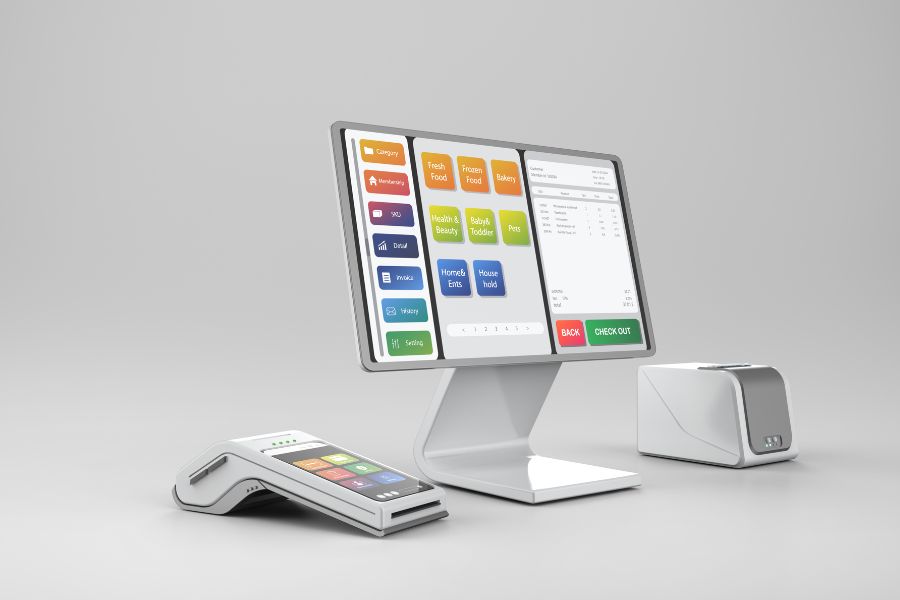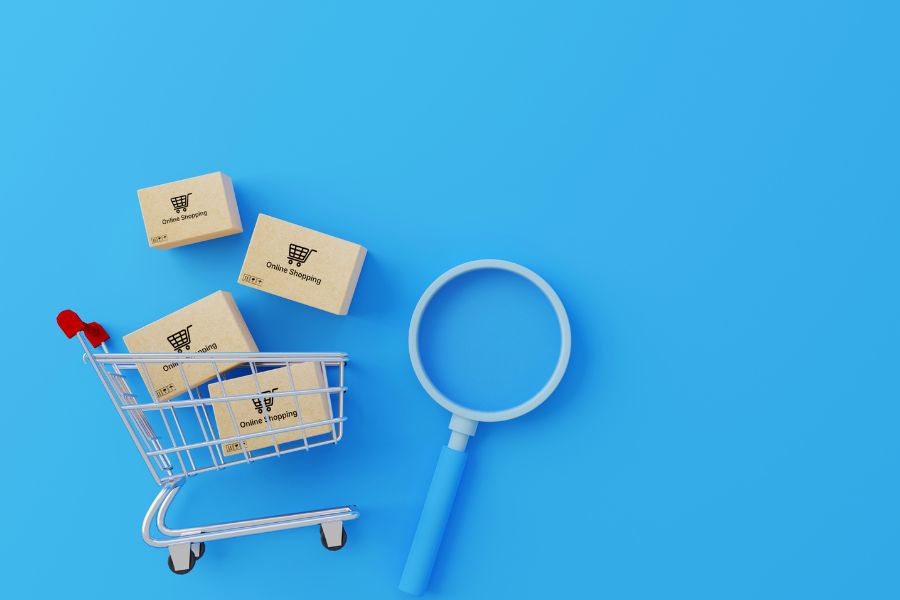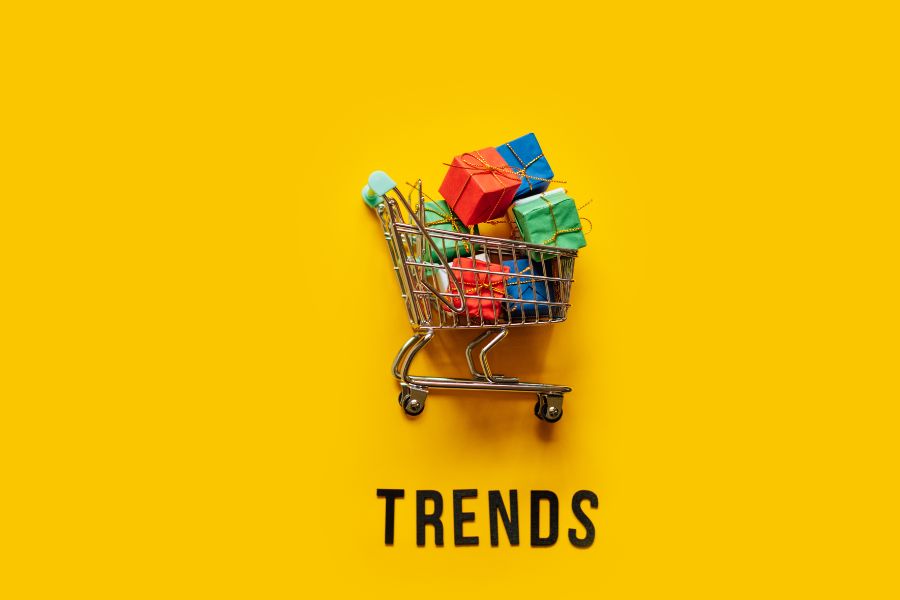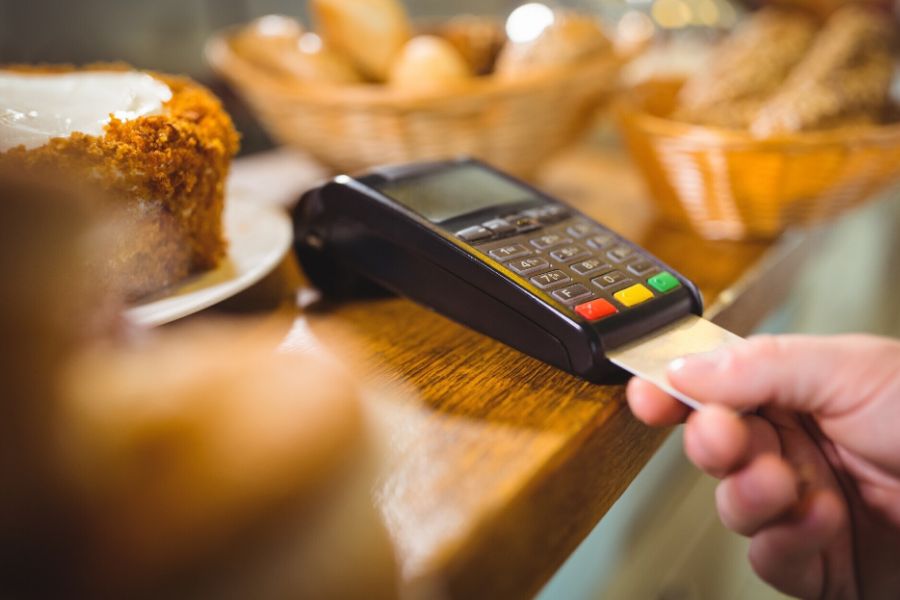Investing in the right Shopify POS devices and integrations can transform the way your store operates. These tools go beyond just handling transactions – they play a key role in improving customer experience and ensuring your business runs smoothly. That’s why we’ll explore how the best POS devices and integrations can take your Shopify store to the next level in this blog.
Highlights
- Shopify stores can benefit from different POS devices, including card readers, barcode scanners, and mobile terminals, to streamline operations.
- Key integrations like inventory management, CRM systems, and accounting software are essentia lfor optimizing your Shopify store.
- The right POS devices and integrations raise your store’s efficiency, elevate customer experience, and offer valuable business insights.
Top Shopify POS Devices That Can Grow Your Store
The right Shopify POS devices can dramatically transform your store operations. Not limited to only transactions, these tools improve customer experiences, making your store a better place to shop.
Shopify POS Pro
Shopify POS Pro is built for stores that need more than just basic tools. It handles inventory, reporting, and staff management with ease. If you have multiple locations or are looking to grow, this is a strong option.
The system makes it easy to manage products and keep track of sales as they happen. It also helps prevent running out of stock and provides useful reports that can guide your business choices. For stores that need to stay on top of trends and customer demands, it’s a reliable partner.
Shopify Retail Kit
The Shopify Retail Kit comes with everything you need to start using POS in your store. It includes a card reader, receipt printer, and cash drawer—all working together with Shopify POS.
This kit is a good fit for small to medium-sized stores. It’s easy to set up and helps you handle in-store payments quickly. If you’re looking to improve how customers check out and speed things up at the counter, this kit is worth considering.
Barcode Scanners
Shopify POS works well with barcode scanners like those from Honeywell and Zebra. These scanners are tough and accurate, making them dependable in busy stores.
With a barcode scanner connected to Shopify POS, entering products is quick and precise. This speeds up checkout and keeps your inventory in check.
Receipt Printers
When it comes to receipt printers, options like Star Micronics and Epson are well-suited for Shopify POS. They’re known for being fast and reliable, which helps keep the checkout line moving.
Make sure the printer you choose works well with Shopify POS. Both of these brands offer easy setup and good connectivity, making them smart choices for retailers.
Card Readers
Card readers come in different styles, like those for swipe cards, chip cards, and contactless payments. The Shopify Tap & Chip Reader is a handy option, covering both chip and tap payments.
This reader is easy to carry and simple to use. It connects directly to Shopify POS, making payments quick and secure, regardless of whether customers are using cards or digital wallets.
Cash Drawers
Brands like APG and MMF make cash drawers that work well with Shopify POS. These drawers are built to last and can connect in different ways, depending on your setup.
To make sure everything works smoothly, pick a cash drawer that matches your receipt printer, as they often work together. Setting it up right within Shopify POS will make sure it opens automatically during cash transactions, making checkout easier.
POS Terminals and Tablets
Many stores use iPads to run Shopify POS because they’re easy to use and carry around. They also work with a range of Shopify accessories, making them versatile.
Using a tablet or POS terminal with Shopify POS lets your staff help customers anywhere in the store. This reduces waiting times and improves the shopping experience. Plus, these devices can handle multiple apps, so you can run your business more efficiently from one place.
Fundamental Integrations to Elevate Your Shopify Store
Integrating the right tools with your Shopify store can significantly improve your operations, enhance customer experience, and drive growth. Here’s a look at some essential integrations that can help refine various aspects of your business.
1. Point of Sale Systems
Think beyond just Shopify POS. While it’s undoubtedly a robust solution, other point-of-sale systems can be integrated to add features and customization.
Take ConnectPOS, for instance—it brings advanced inventory management, multi-store support, and offline capabilities to the table, making it an excellent fit for Shopify stores. This system also handles omnichannel sales, letting you manage both online and in-store transactions effortlessly. With mobile POS as part of its offerings, ConnectPOS helps you serve customers efficiently, ensuring smooth operations no matter where the sales happen.
Such systems provide flexibility, allowing you to pick a POS solution that aligns perfectly with your business needs.
2. Inventory Management Systems
Why integrate inventory management with Shopify? It ensures real-time stock updates, slashes the risk of overselling, and simplifies your supply chain. This integration is vital for maintaining accurate stock levels across multiple sales channels.
Consider tools like TradeGecko (now QuickBooks Commerce) and Stocky. They automate stock tracking, generate insightful reports, and help manage purchase orders—ideal for growing businesses keen on keeping tabs on inventory.
3. Customer Relationship Management (CRM)
Integrating a CRM system with Shopify lets you track customer interactions, manage communications, and personalize marketing efforts. This helps build stronger relationships, boosting loyalty and repeat business.
HubSpot and Klaviyo are popular CRM options that work seamlessly with Shopify. HubSpot offers a comprehensive suite of tools, while Klaviyo focuses on email and SMS marketing, enabling highly targeted campaigns based on customer behavior.
4. Accounting Software
Streamlining financial management is a breeze with the right integration. Accounting software linked with Shopify automates invoicing, expense tracking, and financial reporting. This keeps your financial data accurate and current, aiding in informed decision-making.
QuickBooks and Xero are top choices. They offer features like automated bookkeeping and tax management, which are suitable for businesses of all sizes.
5. Order Fulfillment Solutions
Order fulfillment integrations can overhaul your order processing and logistics. These tools automate tasks such as label printing and shipping rate calculations, reducing manual errors and speeding up delivery times.
ShipStation and ShipBob are excellent options. ShipStation offers robust shipping management tools, while ShipBob provides comprehensive fulfillment services, including warehousing and shipping.
Forbes reveals that acquiring a new customer can cost five times more than retaining an existing customer. Shocking, isn’t it?! Customer retention is key, and a loyalty program integration with Shopify can significantly boost repeat purchases. These programs reward customers for their loyalty with points, referral bonuses, and exclusive discounts. Smile.io and LoyaltyLion are popular choices, offering customizable rewards programs and in-depth analytics to track engagement and performance.
7. Email Marketing
Leverage your Shopify POS data for email marketing. Integrating email campaigns allows you to create targeted messages that speak to your audience. By segmenting customers based on behavior and preferences, you can send personalized messages that drive conversions.
Platforms like Mailchimp and Omnisend are great fits. Mailchimp is user-friendly with powerful automation, while Omnisend excels in omnichannel marketing, covering email, SMS, and push notifications.
8. Reporting and Analytics Tools
To make data-driven decisions, reporting and analytics tools are invaluable. Integrated with Shopify, these tools offer insights into sales trends, customer behavior, and inventory levels. Google Analytics provides deep insights into website traffic, while Better Reports offers customizable reports on various aspects of your Shopify store.
Advantages of Upgrading Shopify POS Devices and Integrations
Upgrading your Shopify POS devices and integrations is about fundamentally transforming your retail operations.
Streamlined Efficiency
Imagine cutting down wait times and eliminating errors in your transactions. Modern Shopify POS devices, like advanced card readers and barcode scanners, integrate seamlessly with your system, making everything run smoother. This increased efficiency means your team can focus more on delivering a great customer experience.
Elevated Customer Experience
Upgrading your POS system can seriously impact how you interact with customers. Tools like CRM systems and loyalty programs allow you to offer personalized service and quicker checkouts. With mobile POS terminals, your staff can assist customers anywhere in the store, making shopping more convenient and engaging. Plus, loyalty programs help build lasting relationships by rewarding repeat visits.
Accurate Data Management
When you integrate inventory management and accounting software with your Shopify POS, your data stays current and precise. This reduces the chance of stockouts and minimizes human error. Accurate data also provides better financial insights, supporting smarter business decisions and growth.
Staying Competitive
Upgrading your POS system is more than keeping up, it’s how you stay ahead. You turn potential challenges into opportunities by aligning with market trends and customer expectations. This approach positions your brand as a leader, helping you navigate the market confidently.
Empowering Your Team
The right POS tools empower your staff to perform their roles more effectively. Advanced permissions allow each team member to access exactly what they need, improving efficiency across your operations. This is especially important for businesses with multiple locations, where streamlined operations are key.
Embracing these upgrades means crafting a shopping environment that exceeds customer expectations, setting your business up for success in a competitive landscape.
Articles on the same topic:
- Shopify POS Go Review: Is it the Best New Mobile Point of Sale?
- Unleashing Retail Success: Shopify POS Integration Guide
- Everything You Need To Know About Shopify POS Cost
3 Steps for the Perfect Shopify POS Devices and Integrations
Selecting the right POS devices and integrations for your Shopify store means aligning them with your business needs, compatibility requirements, and budget constraints.
1. Understanding Your Business Blueprint
Begin by delving into the core needs of your business. Consider elements like store size, transaction volume, the nature of your products, and your future ambitions.
For instance, a quaint boutique might thrive with basic POS tools, whereas a larger retailer with multiple outlets might benefit from sophisticated inventory management systems and CRM integrations to handle more complex operations. This initial assessment is crucial in laying a solid foundation for your POS strategy.
2. Ensure Compatibility with Shopify
It’s vital to select devices and integrations that mesh perfectly with Shopify POS. Prior to any purchase, double-check that your chosen hardware and software are designed to work seamlessly with Shopify. This forethought will shield you from potential pitfalls like data syncing snags, system crashes, or hiccups in customer service.
Thankfully, Shopify’s ecosystem includes a multitude of certified devices and apps that promise smooth integration, providing peace of mind.
3. Budgeting Wisely
While investing in your POS system is certainly worthwhile, it’s important to weigh cost against functionality and the benefits it brings. Think about the long-term return on investment (ROI) when weighing your options.
Sometimes, a slightly higher initial outlay on superior devices and integrations can lead to cost savings down the road by trimming operational inefficiencies, slashing maintenance expenses, and boosting overall business performance.
FAQs: Shopify POS Devices and Integrations to Upgrade Your Store
- What are the key benefits of upgrading my Shopify POS devices?
Upgrading your Shopify POS devices speeds up transactions, improves data accuracy, and enhances the customer experience. It also supports better integration with advanced tools, streamlining your operations.
- Which POS devices are compatible with Shopify?
Shopify is compatible with card readers, receipt printers, barcode scanners, and cash drawers from brands like Star Micronics, Epson, Honeywell, and APG, as well as Shopify’s own Tap & Chip Reader and Retail Kit.
- What is the importance of CRM integration with Shopify POS?
CRM integration with Shopify POS allows you to track customer interactions, personalize marketing efforts, and improve customer loyalty. It provides a unified view of customer data, enabling better engagement and more effective marketing campaigns.
Conclusion
Upgrading your Shopify POS devices and integrating the right tools can make your store more efficient and customer-focused. These improvements not only streamline daily operations but also give you better insights into your business. With the right setup, you’ll be ready to meet today’s retail challenges and set your store up for future success.
If you want to know more about ConnectPOS and how it can enhance your Shopify store, contact us today.
ConnectPOS is a all-in-one point of sale solution tailored to meet your eCommerce POS needs, streamline business operations, boost sales, and enhance customer experience in diverse industries. We offer custom POS with features, pricing, and plans to suit your unique business requirements.




